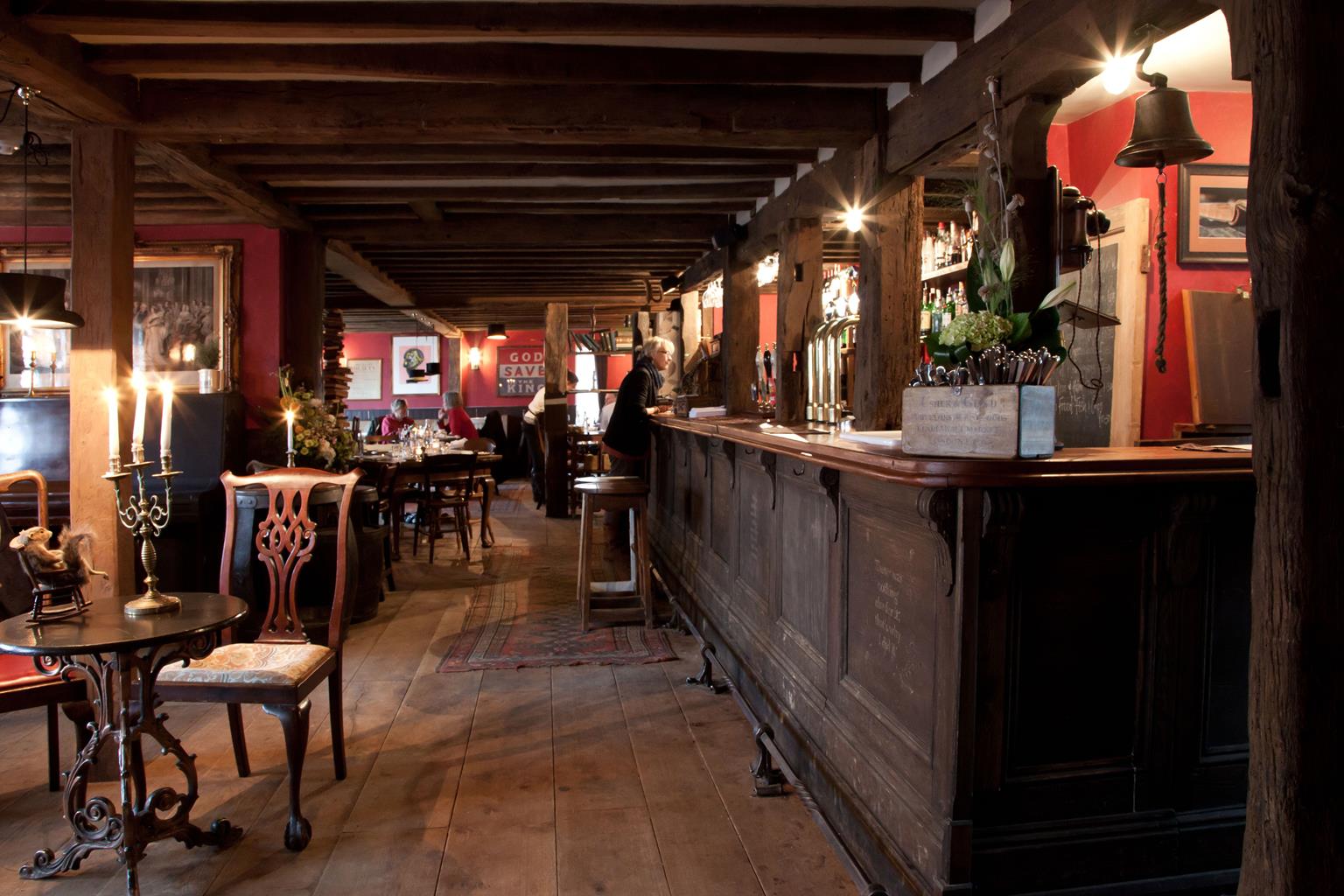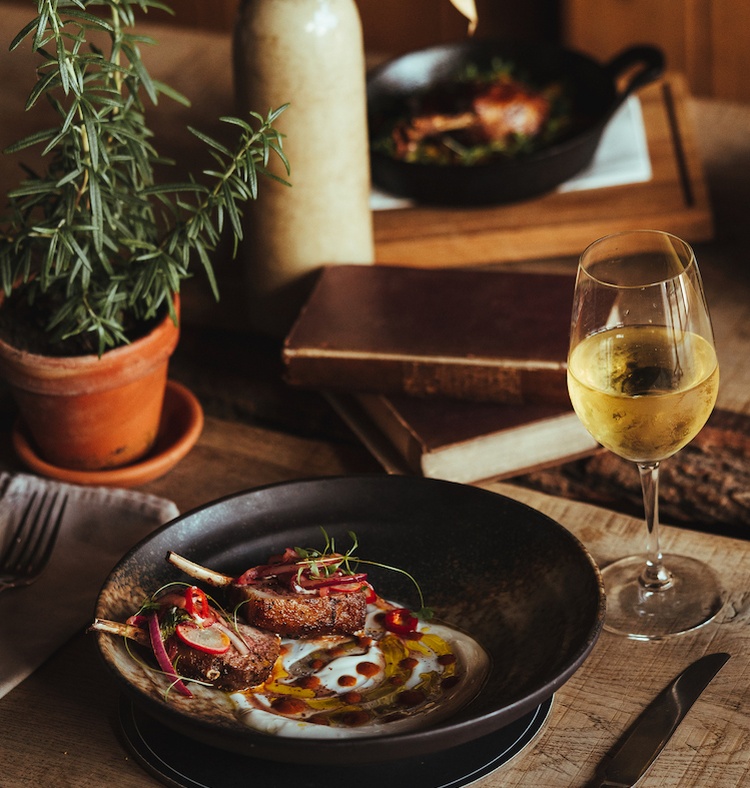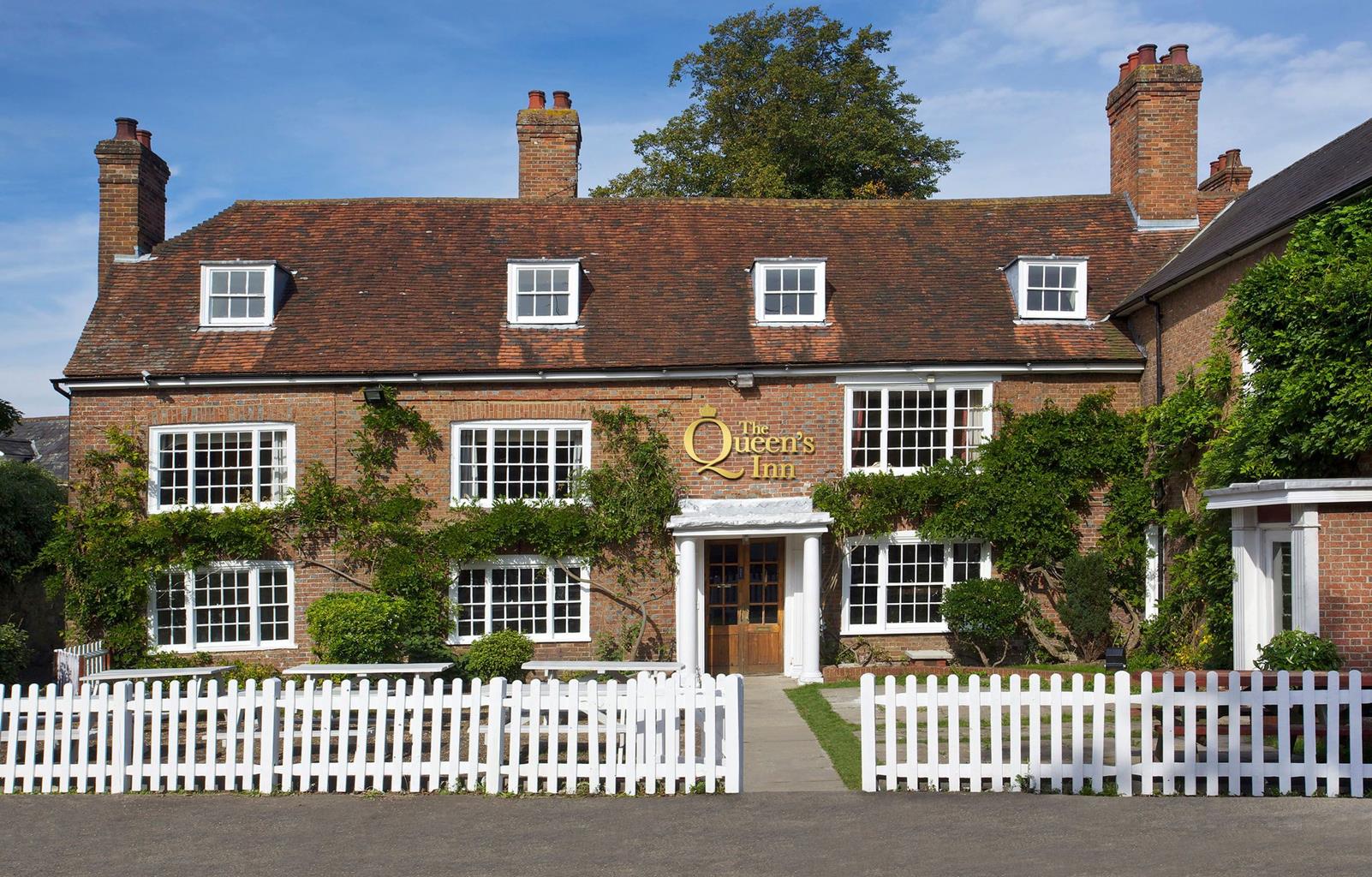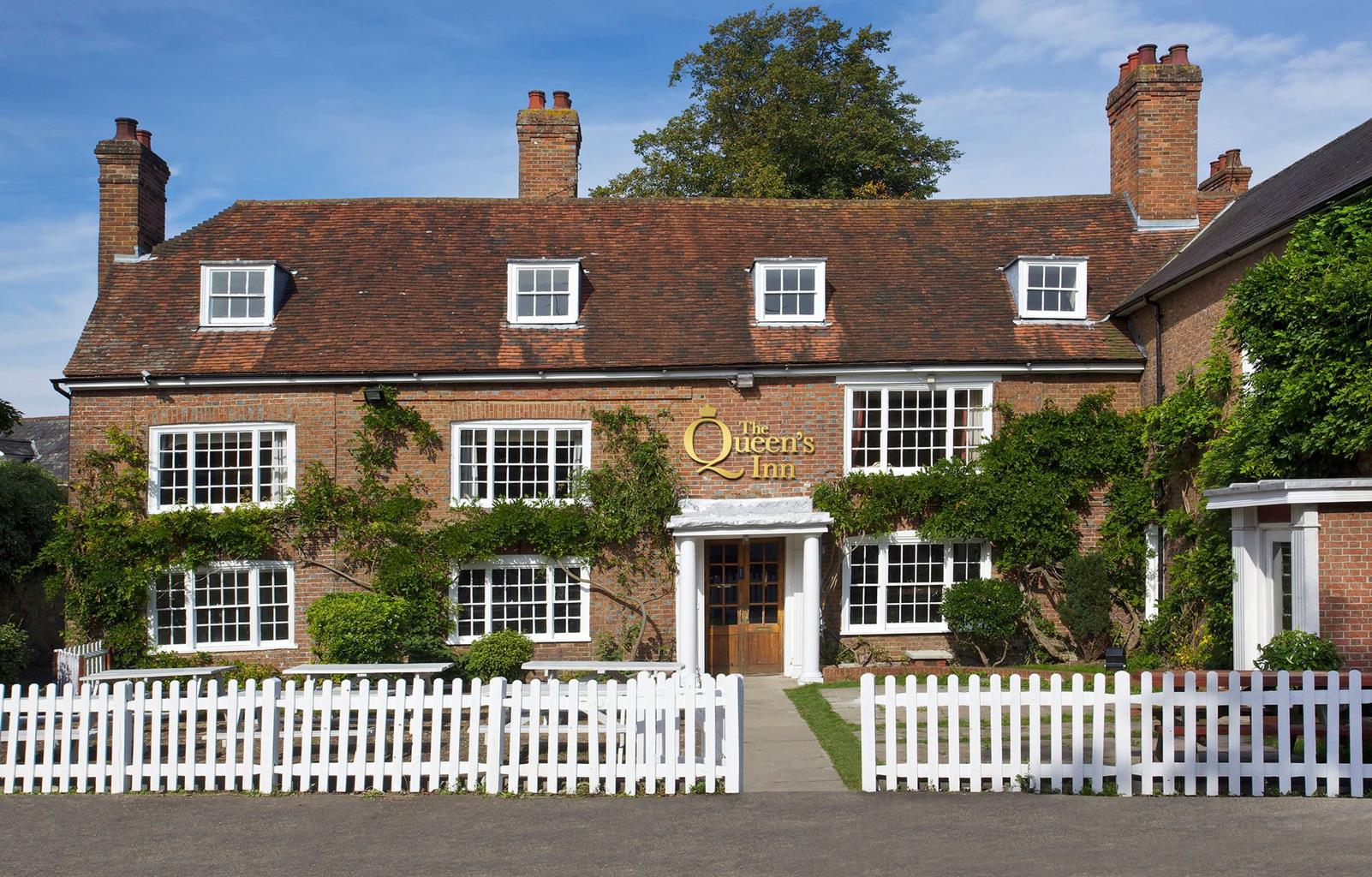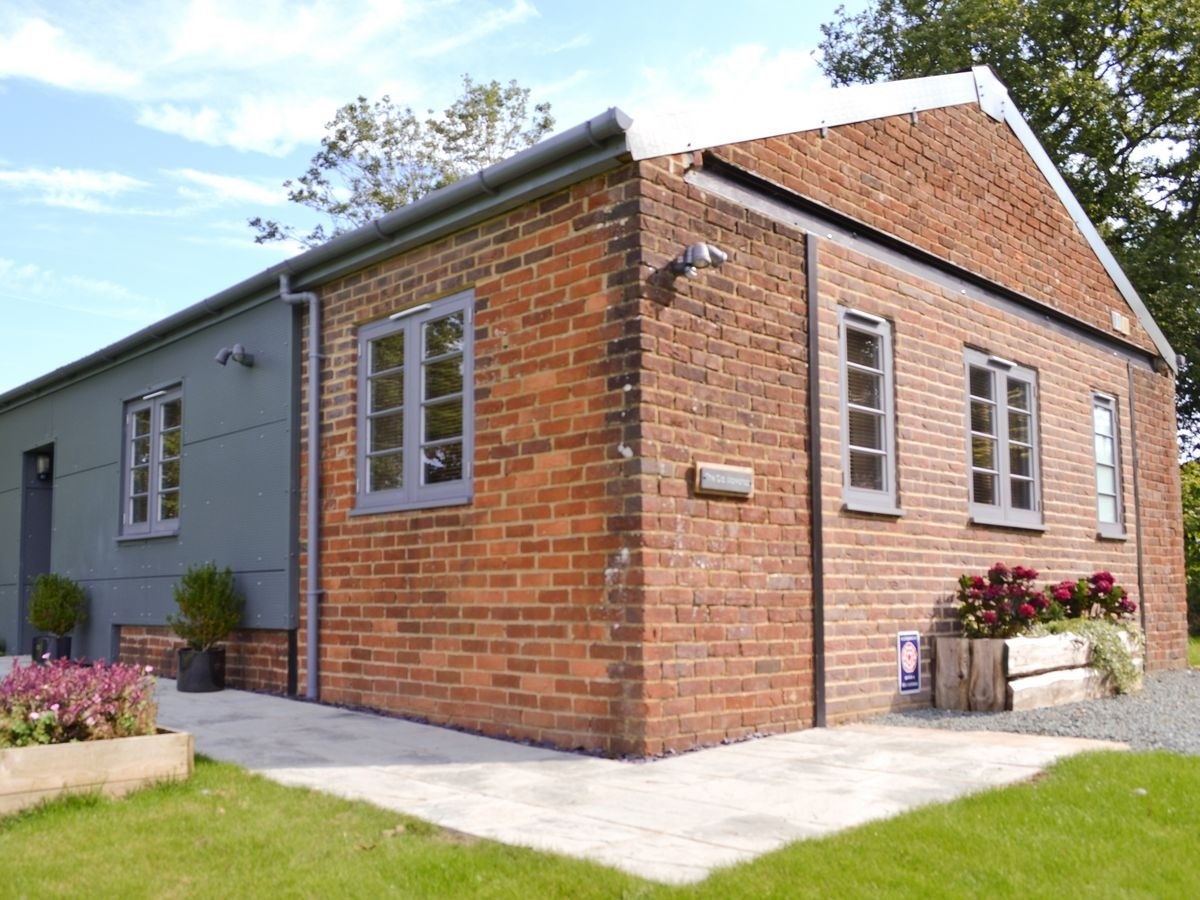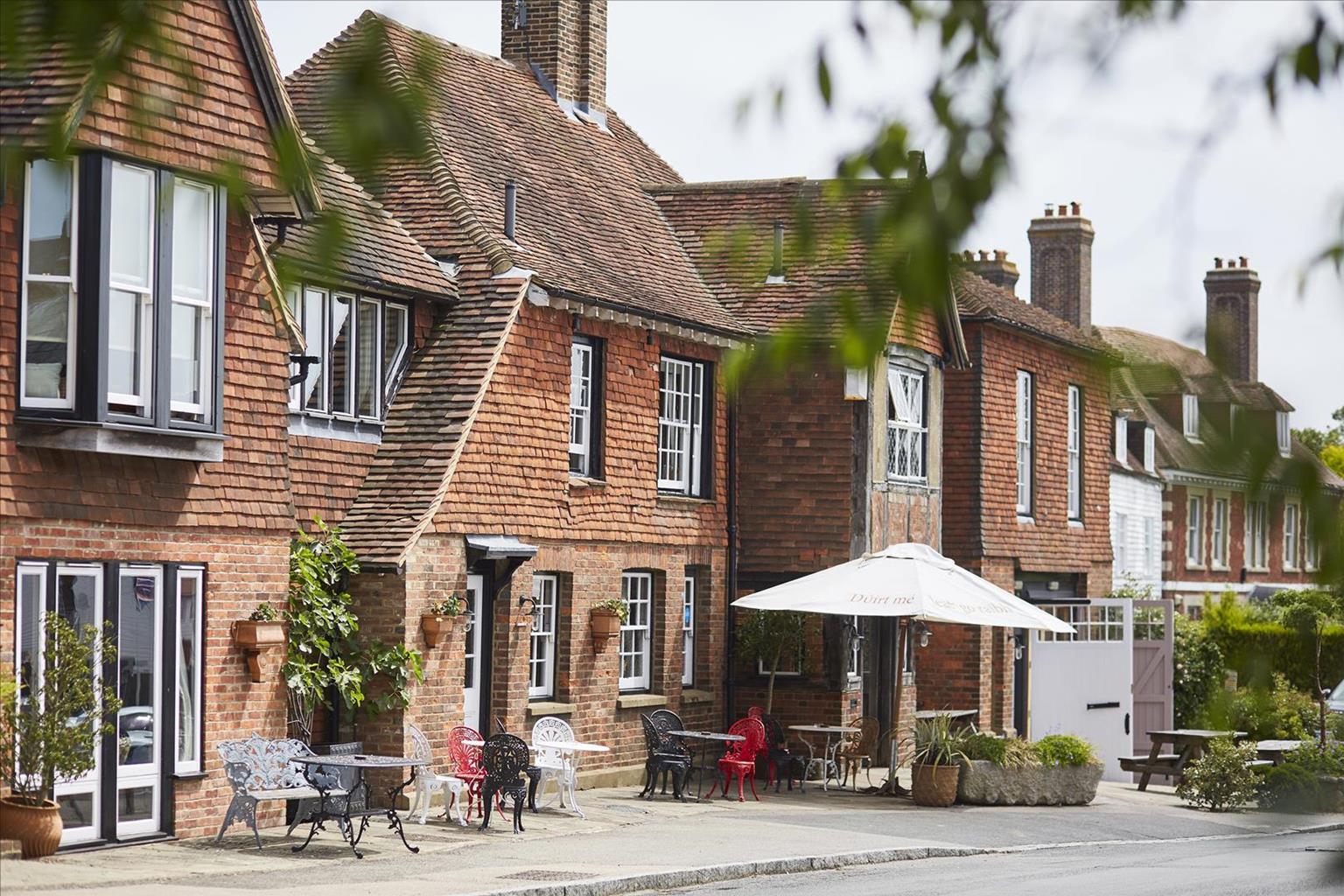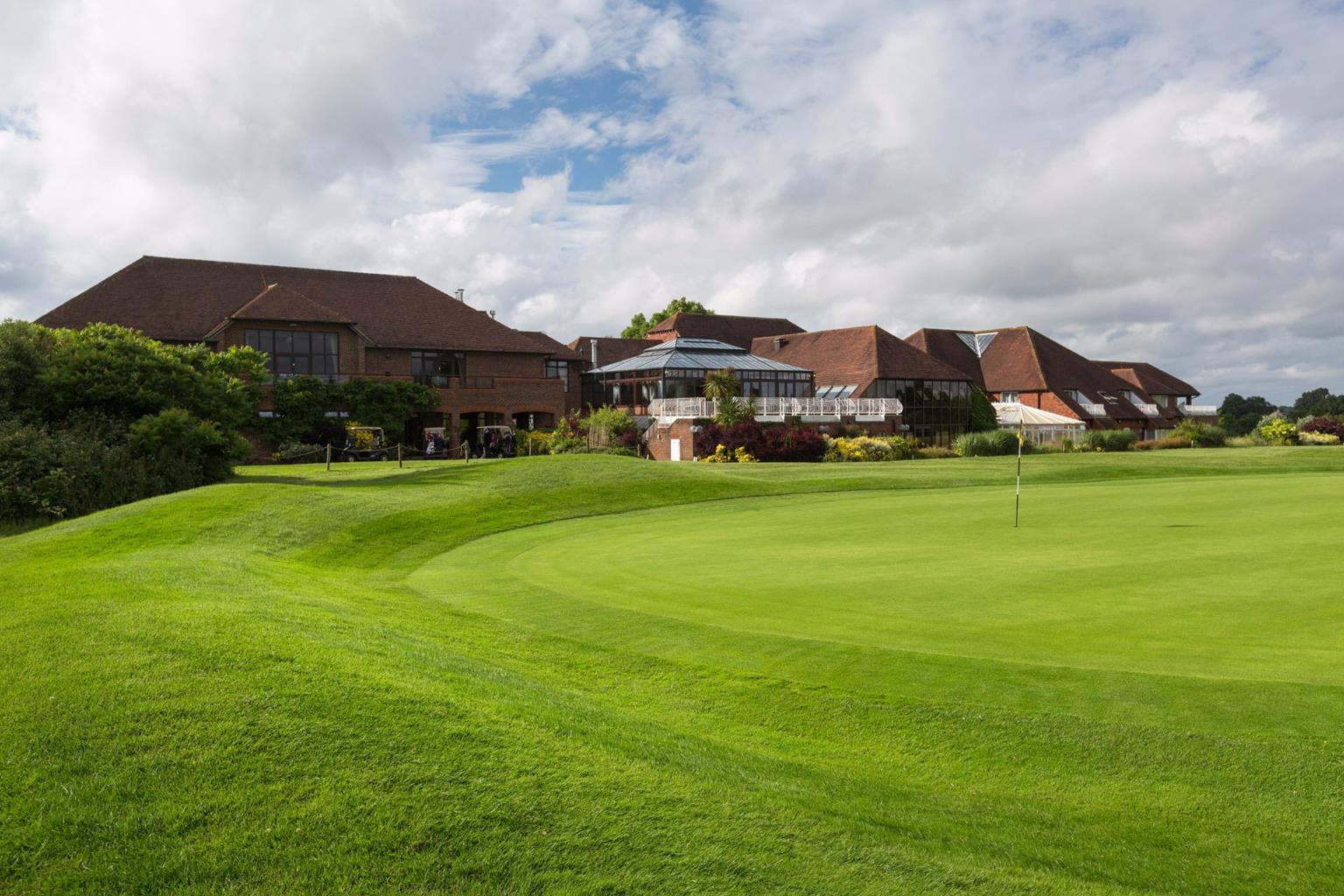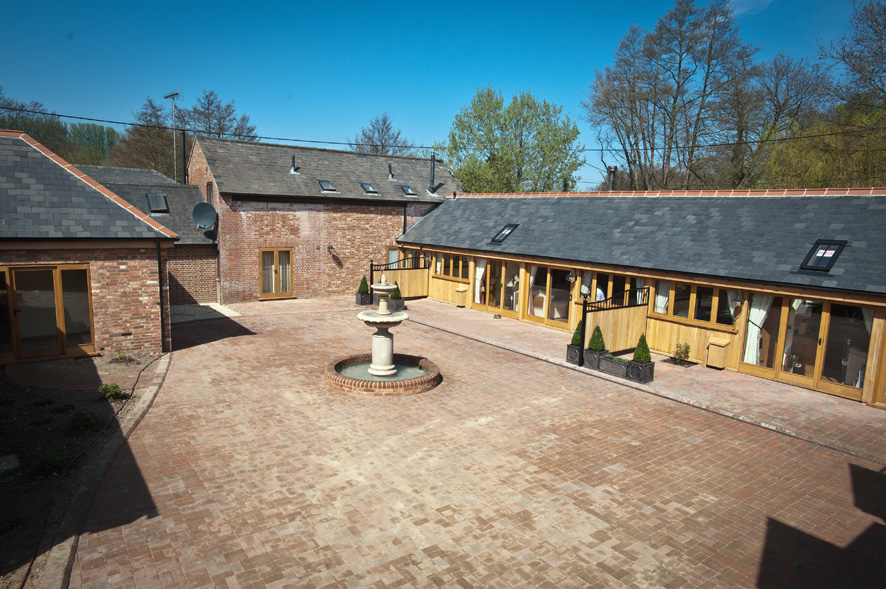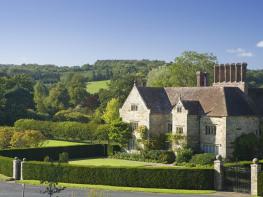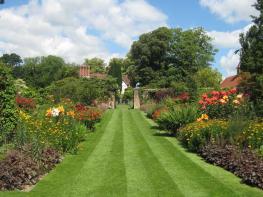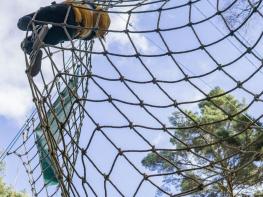The Old Workshop is a self-catering cottage set in rolling hills of the weald countryside, an…
Burwash – Rudyard Kipling's Home

Visit the National Trust home of one of Britain's most celebrated writers on this lovely walk in the Dudwell Valley.
4.75 miles (7.7kms)
About the walk
Bateman’s, in the village of Burwash, was Rudyard Kipling’s refuge. This was his spiritual home, and it was here that he found true happiness. Touring the house and exploring the garden, it’s not difficult to see why he fell in love with the place. It is a charming family home, small and intimate, occupying a peaceful setting in a secluded valley. Built by a local ironmaster in 1634, the house lies about 25 miles (40km) to the northeast of Kipling’s old home at Rottingdean. Kipling purchased the house in 1902 and, now in the care of the National Trust, it remains much as it was in Kipling’s day.
It was here, in his book-lined study, that Kipling wrote some of his most famous works, including Puck of Pook’s Hill. The house and the tranquillity of the surrounding countryside greatly inspired him, and over the years he acquired more land so that he could write and relax away from public scrutiny; ‘We have loved it ever since our first sight of it’, he wrote later. Kipling loved the garden just as much as the house. He planted yew hedges to give him more privacy, and even erected a pear arch. Visitors to Bateman’s can see the results of his labours, and they can also take a stroll through the beautiful rose garden, which he designed after being awarded the Nobel Prize for Literature in 1907.
Kipling liked to socialise, but he was known for his rather curious but discreet manner of asking guests to leave. He would lead them past the garden sundial, which indicated that it was later than it really was, and he would then suggest that they should make their farewells. He was a keen motorist too. He bought a Rolls-Royce and embarked on many journeys, travelling abroad and visiting his old school in Devon. He recorded his travels in detail, and even dispatched reports and memos to the Automobile Association.
This glorious valley walk passes Bateman’s near the start and then again towards the finish, enabling you to choose when you go there to visit. A tour of the house and gardens reveals how the National Trust has preserved the character and integrity of the man, as well as the atmosphere of the place. Kipling died in 1936, after 34 years at Bateman’s. Looking at the house today, it is not difficult to see why he described it as ‘a real house in which to settle down for keeps… a good and peaceable place’.
Walk directions
Make for the footpath behind the toilet block. Follow the path down the slope and, at a junction of paths, cross the plank bridge and gate on the right. Continue ahead, making for the next gate, and keep the boundary hedge on your right. Pass through another gate and then head diagonally down the field. Make for a gap in the field corner, follow the left-hand field-edge to a stile and exit to the road. (Make a mental note of this point, as you will return to it later.)
Turn right and follow the lane along to Bateman’s. Keep left in front of the house itself and proceed past some other houses. At Park Farm ignore the arrowed gate on the left and continue through the farm, then bear left uphill, This glorious valley walk passes Bateman’s near the start and then again towards the finish, enabling you to choose when you go there to visit. A tour of the house and gardens reveals how the National Trust has preserved the character and integrity of the man, as well as the atmosphere of the place. Kipling died in 1936, after 34 years at Bateman’s. Looking at the house today, it is not difficult to see why he described it as ‘a real house in which to settle down for keeps… a good and peaceable place’. through the edge of some woodland to a gate. Head up the field slope, keeping the trees on your immediate right. Look for a gate and bridleway post on the right, passing through the wood.
Bear left at a T-junction with a track, then immediately right, and follow the bridleway, keeping left at the fork. Pass a pair of remote cottages and walk along to the road. Turn right, eventually passing the entrance to Willingford Farm and then, after the road crosses a stream, start to climb quite steeply.
Just before a small white house on the right, go right through a kissing gate. After a stile, climb a narrow path that tends to become clogged with nettles and brambles in summer. Head diagonally across a large field; soon the buildings of Burnt House Farm come into view. Go through a small metal gate (the left-hand of two gates) in the field corner, carry on below the buildings through waymarked gates, then walk along the top left side of a field.
At a junction of waymarked paths keep forward, ignoring the path to the right. Carry on along the edge of the next field, past a metal water tank and down through a belt of woodland to a field, and head down just to the left of the chimney of a house. Turn right along a surfaced lane which very quickly becomes a grassy track, passing some dilapidated farm outbuildings.
Cross over a stile by a gate and keep right. Look for a galvanised gate near the end of the field, turn left and then skirt round the edge of the field. Veer over to a stile towards the far end, cross a footbridge and turn left. Follow the path over a sluice, past a pond and a cottage, bearing right to a track. Turn left and head back to Bateman’s, and retrace your steps to Burwash.
Additional information
Field and woodland paths, stretches of minor road, several stiles
Rolling, semi-wooded countryside of the Dudwell Valley
Dogs on lead in vicinity of Bateman’s and Park Farm and on stretches of farmland. Off lead on woodland paths and tracks. Bateman’s is dog friendly but has a few rules it asks dog owners to abide by.
OS Explorers 136 High Weald
Car park off A265 in Burwash village
At car park
WALKING IN SAFETY
Read our tips to look after yourself and the environment when following this walk.
Find out more
Also in the area
About the area
Discover East Sussex
East Sussex, along with its western counterpart, is packed with interest. This is a land of stately homes and castles, miles of breezy chalk cliffs overlooking the English Channel, pretty rivers, picturesque villages and links to our glorious past. Mention Sussex to many people and images of the South Downs immediately spring to mind – ‘vast, smooth, shaven, serene,’ as the writer Virginia Woolf described them. She and her husband lived at Monk’s House in the village of Rodmell, near Lewes, and today, her modest home is managed by the National Trust and open to the public.
There are a great many historic landmarks within Sussex, but probably the most famous is the battlefield where William, Duke of Normandy defeated Harold and his Saxon army to become William the Conqueror of England. By visiting Battle, near Hastings, you can, with a little imagination, picture the bloody events that led to his defeat. East Sussex’s pretty towns such as Lewes, Rye and Uckfield have their charms, while the city of Brighton offers museums and fascinating landmarks, the best-known and grandest feature being the Royal Pavilion.
Nearby stays
Restaurants and Pubs
Nearby experiences
Recommended things to do
Why choose Rated Trips?
Your trusted guide to rated places across the UK
The best coverage
Discover more than 15,000 professionally rated places to stay, eat and visit from across the UK and Ireland.
Quality assured
Choose a place to stay safe in the knowledge that it has been expertly assessed by trained assessors.
Plan your next trip
Search by location or the type of place you're visiting to find your next ideal holiday experience.
Travel inspiration
Read our articles, city guides and recommended things to do for inspiration. We're here to help you explore the UK.

